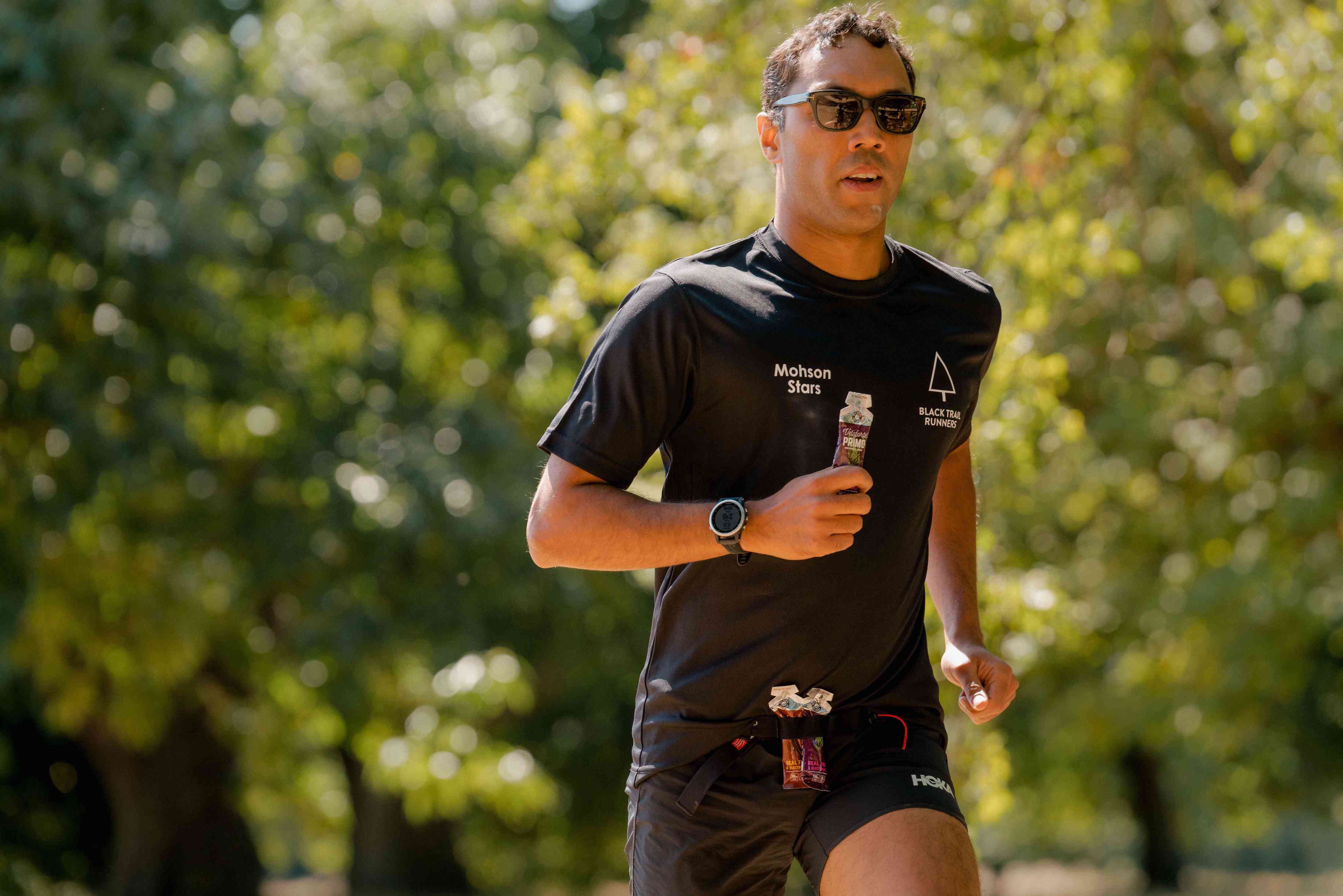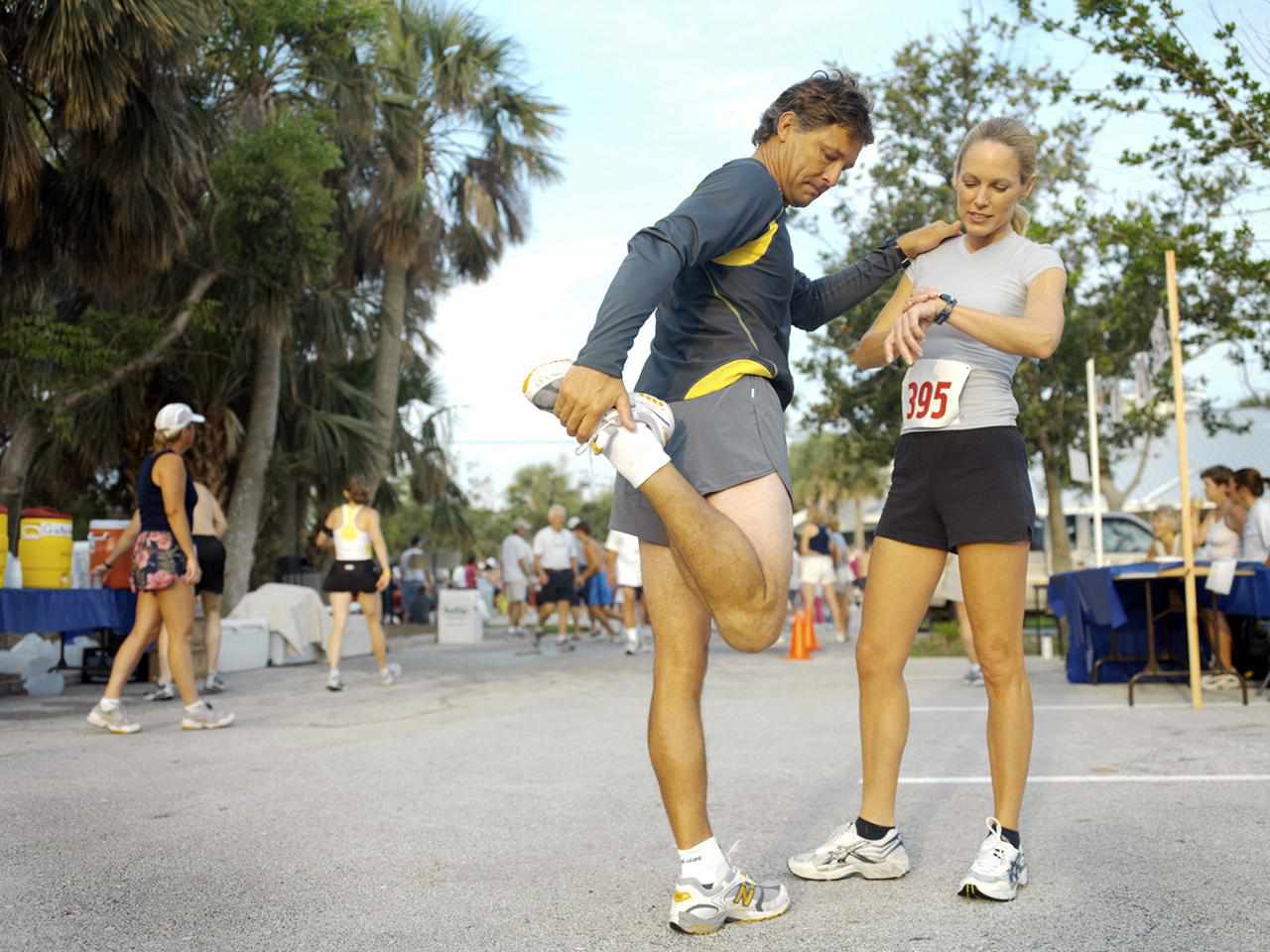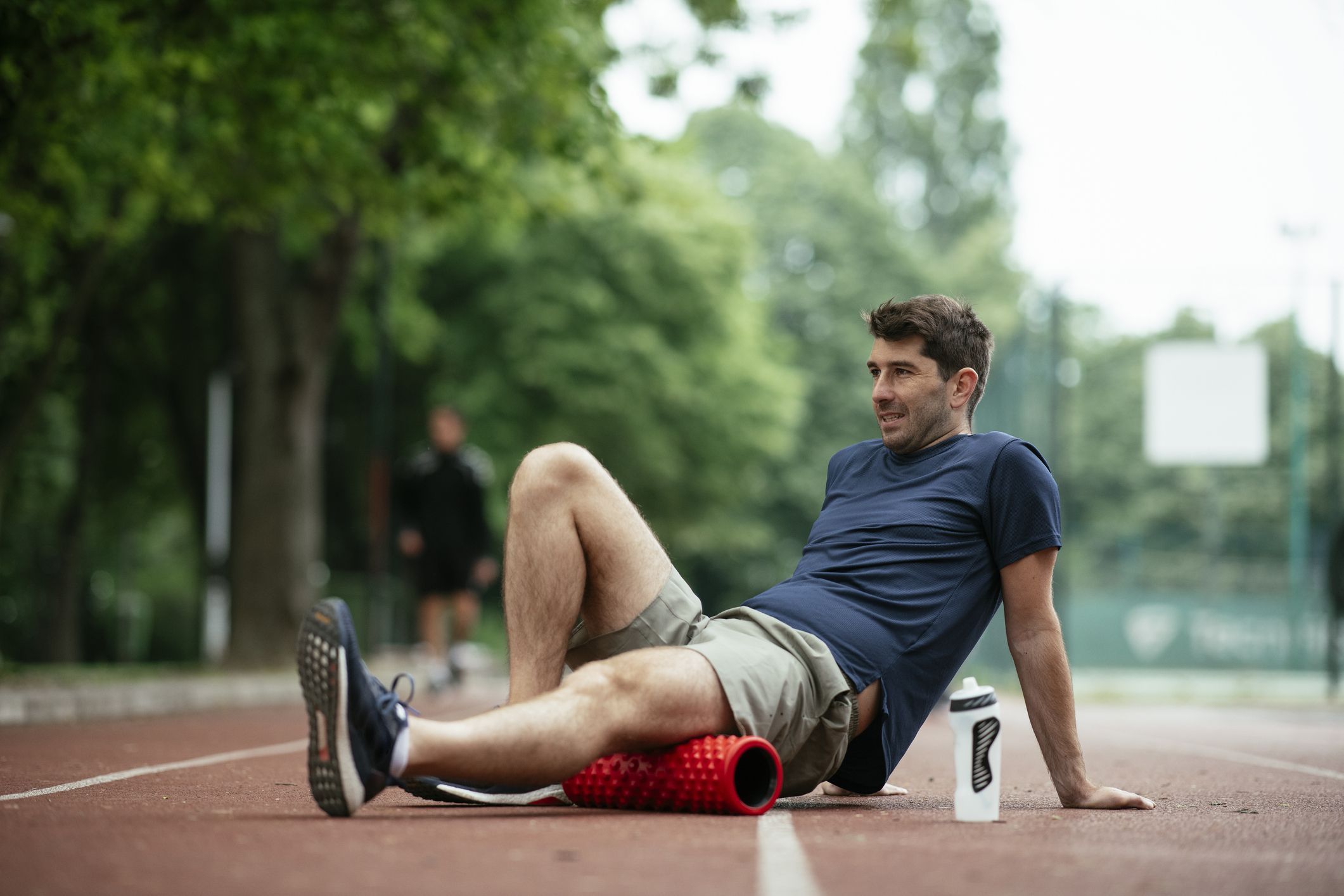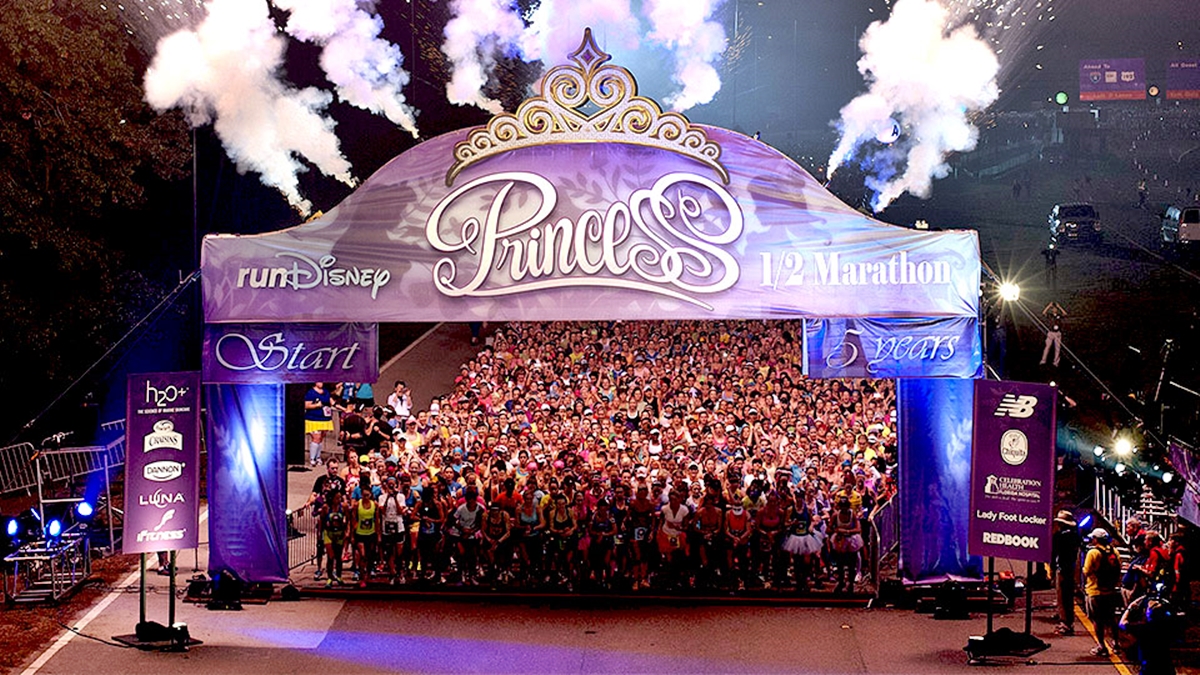

Featured
How To Run Half Marathon
Modified: January 22, 2024
Discover the featured tips and training techniques on how to successfully run a half marathon and achieve your fitness goals.
Introduction
Welcome to the exciting world of half marathons! Whether you’re a seasoned runner looking to challenge yourself or a beginner seeking a new fitness goal, completing a half marathon is a remarkable achievement that will push your physical and mental boundaries.
A half marathon is a road race that covers a distance of 13.1 miles (or 21.0975 kilometers). It’s longer than a 10K race but not quite as demanding as a full marathon. This makes it the perfect stepping stone for those who want to progress from shorter races to the ultimate marathon challenge.
Running a half marathon is not only a test of endurance, but it also offers numerous physical and mental benefits. Engaging in regular running and training can improve your cardiovascular health, increase your stamina, boost your immune system, and even uplift your mood. Moreover, the sense of accomplishment and the rush of endorphins you experience when crossing that finish line are truly invaluable.
However, it’s important to note that preparing for a half marathon requires dedication, commitment, and proper training. It’s not something you can simply wake up and decide to do without any prior preparation. This article will guide you through the essential steps to help you successfully train for a half marathon and make your race day a memorable journey.
Whether you’re aiming for a personal best time, aiming to complete the race injury-free or just aiming to enjoy the experience, this guide will equip you with the knowledge and tools you need to run a successful half marathon.
So, are you ready to lace up your running shoes, hit the pavement, and embark on an incredible half marathon adventure? Let’s dive into the world of training, preparation, and dedication as we explore the tremendous benefits and the comprehensive steps you need to take to conquer the half marathon distance.
Benefits of Running a Half Marathon
Running a half marathon offers a multitude of physical, mental, and emotional benefits that can transform your life. Here are some of the key advantages of taking on the challenge:
- Improved Cardiovascular Health: Training for and completing a half marathon requires cardiovascular endurance. Regular running builds up your heart and lungs, improving their efficiency and strengthening your cardiovascular system.
- Increased Stamina: Running long distances increases your endurance and stamina. As you train for a half marathon, your muscles become more efficient at using oxygen, allowing you to sustain physical exertion for longer periods.
- Weight Management: Running a half marathon can help you shed excess pounds and maintain a healthy weight. The high intensity of running burns calories and boosts your metabolism, resulting in fat loss.
- Mental Clarity and Stress Relief: Running is an excellent way to clear your mind and reduce stress. The endorphins released during a run can boost your mood, alleviate anxiety, and improve your overall mental well-being.
- Improved Discipline and Mental Toughness: Training for a half marathon requires discipline and mental strength. It teaches you to push through physical and mental barriers, helping you develop resilience, determination, and perseverance.
- Sense of Achievement: Crossing the finish line of a half marathon is an incredible accomplishment that instills a sense of pride and achievement. It proves to yourself that you are capable of setting and achieving challenging goals.
- Community and Camaraderie: Participating in a half marathon provides an opportunity to connect with like-minded individuals who share a passion for running. The supportive and encouraging atmosphere of the running community can be incredibly motivating.
- Discovering Your Potential: Training for a half marathon often reveals untapped potential and strengths you may not have known you possessed. It allows you to push beyond your comfort zone and discover what you are truly capable of.
- Long-Term Health Benefits: Regular running not only improves your immediate fitness but also reduces the risk of chronic diseases such as heart disease, diabetes, and certain types of cancer. It can contribute to a longer, healthier life.
- Personal Growth: Running a half marathon is not just about the physical aspects; it’s also a journey of self-discovery and personal growth. The challenges and triumphs you experience along the way can have a profound impact on your self-confidence and self-belief.
These are just some of the countless benefits that come from running a half marathon. So, lace up your shoes, embrace the challenge, and embark on a journey that will transform you physically, mentally, and emotionally.
Preparing for the Half Marathon
Preparing for a half marathon requires a systematic and structured approach to ensure you’re ready to tackle the distance. Here are some essential steps to help you along the way:
- Assess Your Current Fitness Level: Before diving into a training plan, it’s vital to assess your current fitness level. Evaluate your running endurance, strength, and any existing injuries to gauge where you currently stand.
- Consult with a Healthcare Professional: If you have any underlying health concerns or chronic conditions, it’s wise to consult with a healthcare professional before embarking on a half marathon training program. They can provide guidance and ensure you’re physically capable of handling the training demands.
- Establish a Training Schedule: A well-structured training schedule is key to gradually increase your mileage and build endurance. Set aside specific days and times for running, cross-training, and rest days. Aim for a balance between challenging workouts and adequate recovery time.
- Incorporate Cross-Training: Cross-training activities such as cycling, swimming, yoga, or strength training can help improve your overall fitness, prevent injuries, and work different muscle groups. Include at least one or two cross-training sessions per week in your training plan.
- Gradually Increase Mileage: The key to preparing for a half marathon is gradual progression. Gradually increase your weekly mileage, adding no more than 10% to your long run distance each week. This helps prevent overuse injuries and allows your body to adapt to the demands of running.
- Include Interval and Tempo Runs: Incorporate interval and tempo runs into your training to improve your speed and aerobic capacity. Interval runs consist of alternating between periods of high-intensity running and recovery. Tempo runs involve sustained running at a comfortably hard pace.
- Practice Hill Training: If your half marathon course includes hills, it’s crucial to incorporate hill training into your program. Hill repeats and steady hill runs can help strengthen your leg muscles and improve your uphill running technique.
- Listen to Your Body: Pay attention to your body’s signals and adjust your training if necessary. Rest and recover when needed, and don’t push through pain or fatigue. Ignoring warning signs can lead to injury and setbacks.
- Track Your Progress: Keep a training log to track your progress and monitor your improvements. It can be motivating to see how far you’ve come and identify areas for adjustment or improvement.
- Simulate Race Conditions: As race day approaches, incorporate race simulations into your training. Practice running at your goal race pace, try out your race day attire and nutrition strategy, and simulate the race distance during a long run.
By following these steps, you’ll be well-prepared and ready to conquer the half marathon distance. Remember that consistency, patience, and listening to your body are crucial in your training journey.
Setting a Training Plan
A well-designed training plan is essential for successfully preparing for a half marathon. It helps ensure gradual progression, injury prevention, and optimal performance on race day. Here are key considerations when setting your training plan:
- Choose a Plan That Fits Your Needs: There are various training plans available, ranging from beginner-friendly to advanced. Consider your current fitness level, running experience, and time availability when selecting a plan. It’s important to choose a plan that aligns with your goals and abilities.
- Consider Timeframe: Determine the duration of your training plan based on your race date. Most plans range from 8 to 16 weeks. Factor in sufficient time to gradually build mileage, incorporate rest days, and allow for recovery.
- Build Mileage Gradually: A successful training plan gradually increases your weekly mileage to build endurance without overexertion. Look for a plan that incorporates incremental mileage increases, while also including cutback weeks for recovery.
- Incorporate Rest Days: Rest days are just as crucial as training days. They allow your body to recover, repair muscles, and reduce the risk of overuse injuries. Look for a plan that includes at least one or two rest days per week.
- Include Different Types of Runs: A well-rounded training plan should include a mix of easy runs, long runs, speed workouts, and tempo runs. These varied workouts enhance different aspects of your running performance and help avoid monotony.
- Flexibility for Adjustments: A training plan should be flexible to accommodate changes in your schedule or unforeseen circumstances. Life can sometimes get in the way of training, so it’s important to have the flexibility to make adjustments and still stay on track.
- Listen to Your Body: Your training plan serves as a guide, but it’s essential to listen to your body and make adjustments when necessary. If you’re feeling overly fatigued or experience pain, it’s okay to take an extra rest day or modify your training. Your health and well-being should always come first.
- Progressive Overload: To continually challenge your body and improve, gradually increase the intensity of your workouts over time. This principle of progressive overload ensures that you continue to push your boundaries and make progress in your training.
- Consider Cross-Training and Strength Workouts: In addition to running, incorporate cross-training activities such as cycling, swimming, or strength training on select days. These activities help improve overall fitness, prevent injury, and strengthen muscles.
- Periodization: Consider incorporating periodization into your training plan. This involves dividing your training into phases, each with a specific focus and intensity. Periodization helps prevent burnout, optimize performance, and peak at the right time for your race.
Remember, a training plan should be tailored to your individual needs and goals. Consider working with a running coach or seeking guidance from experienced runners to ensure you’re setting a training plan that suits your circumstances and maximizes your performance potential.
Proper Nutrition and Hydration
Nutrition and hydration play a vital role in your overall performance and well-being as you train for a half marathon. Here are some essential guidelines to help you fuel your body and stay hydrated:
- Consume a Balanced Diet: Focus on whole, nutrient-dense foods to provide your body with the necessary fuel. Include a variety of fruits, vegetables, whole grains, lean proteins, and healthy fats in your diet. Prioritize complex carbohydrates for sustained energy.
- Time Your Meals Properly: Plan your meals to ensure you have adequate energy for your training runs. A pre-workout meal should consist of easily digestible carbohydrates and a small amount of protein. Allow time for digestion before running. Post-workout, aim to consume a combination of carbohydrates and protein to aid in muscle recovery.
- Stay Hydrated: Hydration is crucial for optimal performance and to prevent dehydration. Drink water regularly throughout the day and pay attention to your body’s thirst signals. During longer runs, consider carrying water or utilizing hydration stations along your route.
- Electrolyte Balance: Electrolytes like sodium, potassium, and magnesium are essential for maintaining fluid balance and muscle function. Consume electrolyte-rich foods and consider sports drinks or electrolyte supplements during long runs or in hot weather.
- Fuel During Long Runs: For runs lasting longer than an hour, consider fueling with energy gels, chews, or sports drinks to replenish glycogen stores and maintain energy levels. Experiment with different fueling options during training to find what works best for you.
- Recovery Nutrition: After long runs or intense workouts, prioritize proper recovery nutrition. Consuming a combination of carbohydrates and protein within 30 minutes of finishing your run can aid in muscle repair and glycogen replenishment.
- Listen to Your Body: Pay attention to any gastrointestinal discomfort or adverse reactions to certain foods or drinks during training. Everyone’s nutritional needs are different, so listen to your body’s cues and make adjustments accordingly.
- Work with a Nutritionist or Dietitian: If you’re unsure about your specific nutritional needs or have dietary restrictions, consider consulting a nutritionist or dietitian who specializes in sports nutrition. They can help create a personalized plan based on your unique requirements.
- Practice Race Day Nutrition: As you approach your race day, incorporate race day nutrition strategies during your long training runs. Experiment with various fueling options, timing, and hydration strategies to find what works best for you.
- Don’t Forget Recovery: Proper nutrition and hydration go hand in hand with rest and recovery. Adequate sleep and allowing your body time to rest and repair are crucial for reaping the benefits of your training and reducing the risk of injury.
Remember, proper nutrition and hydration are key to optimizing your performance, preventing fatigue, and promoting overall health and well-being throughout your half marathon training journey.
Choosing the Right Gear
Selecting the right gear is essential for a comfortable and successful half marathon experience. Here are some key factors to consider when choosing your running gear:
- Running Shoes: Invest in a quality pair of running shoes that provide proper support and cushioning. Visit a specialty running store to get fitted for shoes that suit your foot type and running style. Break them in during your training to ensure optimal comfort on race day.
- Moisture-Wicking Clothing: Opt for moisture-wicking and breathable fabrics that help keep you dry and comfortable during your runs. Avoid cotton, as it retains moisture and can lead to chafing and discomfort. Look for clothing designed specifically for running.
- Appropriate Layers: Dress in layers that can be easily added or removed to adapt to changing weather conditions. Consider lightweight jackets, long-sleeve shirts, and compression gear for added warmth and support when needed.
- Comfortable Socks: Choose moisture-wicking socks with cushioning and arch support to prevent blisters and enhance overall comfort. Experiment with different sock materials and thicknesses to find what works best for your feet.
- GPS Watch or Running App: Consider using a GPS watch or a running app on your smartphone to track your distance, pace, and other metrics during your training runs. This provides valuable feedback on your performance and helps you stay on track with your training plan.
- Sports Bra: For female runners, investing in a high-quality sports bra is crucial for comfort and support. Look for bras specifically designed for running and choose the right size and level of support for your needs.
- Sunglasses and Hat: Protect yourself from the sun’s rays by wearing sunglasses with UV protection and a hat or visor to shield your eyes and face. Look for lightweight and breathable options that won’t hinder your vision or comfort.
- Reflective Gear and Lights: If you’re running early in the morning or in low-light conditions, wear reflective gear or attach reflective accessories to ensure visibility to drivers. Consider using a headlamp or other lights for added safety.
- Body Glide or Anti-Chafing Products: To prevent chafing and discomfort, apply body glide or other anti-chafing products to areas prone to friction, such as underarms, thighs, and nipples. This can help reduce the risk of painful chafing during longer runs.
- Accessories: Consider any additional accessories that may enhance your running experience, such as a running belt or waist pack to carry fuel and essentials, a foam roller or massage ball for recovery, or compression sleeves for added support and recovery.
Remember, choosing the right gear is essential for your comfort, performance, and injury prevention. Take the time to research and invest in quality gear that suits your needs and preferences for an enjoyable and successful half marathon journey.
Injury Prevention and Recovery
Injury prevention and proper recovery are crucial elements of a successful half marathon training program. Here are some key tips to help you stay injury-free and recover effectively:
- Listen to Your Body: Pay attention to any pain, discomfort, or unusual sensations during your runs. Ignoring warning signs can lead to overuse injuries. If you experience persistent pain, seek advice from a healthcare professional.
- Warm Up and Cool Down: Prior to running, warm up with dynamic stretches and exercises to increase blood flow and loosen up your muscles. After your run, cool down with light jogging or walking followed by static stretching to aid in muscle recovery.
- Strength and Cross-Training: Include strength training exercises that target your legs, core, and upper body to improve muscular balance and stability. Cross-training activities like swimming, cycling, or yoga also help alleviate the repetitive stress on your body from running.
- Recovery Runs and Rest Days: Plan recovery runs at an easy pace to promote active recovery. These shorter, slower runs allow your body to adapt and recover while still maintaining your running routine. Incorporate at least one or two rest days each week for complete rest and recovery.
- Gradual Mileage Increases: Avoid sudden increases in mileage, as it can lead to overuse injuries. Gradually increase your weekly mileage according to your training plan, allowing your body time to adapt to the demands of running.
- Proper Nutrition and Hydration: A balanced diet and adequate hydration support recovery and fuel your body for optimal performance. Provide your body with the necessary nutrients to repair and replenish after each run.
- Stretching and Foam Rolling: Incorporate regular stretching and foam rolling into your routine to maintain muscle flexibility and prevent tightness. Target major muscle groups such as quadriceps, hamstrings, calf muscles, and hips.
- Sleep and Rest: Adequate rest and quality sleep are essential for muscle recovery and overall well-being. Aim for 7-9 hours of sleep each night to support your body’s healing and repair processes.
- Ice Baths and Cold Therapy: Cold therapy, such as ice baths or using ice packs, can help reduce inflammation and muscle soreness. Consider incorporating these recovery techniques after long or intense runs.
- Seek Professional Help When Needed: If you experience persistent pain or suspect an injury, consult with a healthcare professional who specializes in sports medicine. They can provide a diagnosis, recommend appropriate treatment, and help you navigate the recovery process.
Prioritizing injury prevention and recovery will ensure that you stay healthy and strong throughout your half marathon training. Taking care of your body and addressing any issues promptly will set you up for success on race day.
Setting Realistic Goals
Setting realistic goals for your half marathon is essential to ensure a positive and fulfilling experience. Here are some key factors to consider when setting your goals:
- Evaluate Your Current Fitness Level: Assess your current running abilities, endurance, and speed. Consider your previous race times and training performances to determine a starting point for goal setting.
- Consider External Factors: Take into account any external factors that may affect your race performance, such as the course terrain, weather conditions, and elevation. Adjust your goals accordingly to account for these variables.
- Set Multiple Goals: It’s helpful to set both long-term and short-term goals. Your long-term goal may be to complete the half marathon, while your short-term goals can include achieving specific weekly mileage or improving your pace.
- Be Realistic and Specific: Set goals that are challenging but realistic based on your current fitness level and training progress. Ensure that your goals are specific, such as aiming for a particular finishing time or achieving a certain level of consistency in your training.
- Consider Both Performance and Process Goals: Performance goals focus on achieving a specific outcome, such as finishing within a certain time. Process goals, on the other hand, center around the actions and behaviors needed to reach those outcomes, such as sticking to your training plan or improving your running form.
- Measure Your Progress: Regularly track your progress to determine if you’re moving closer to your goals. This can be done through time trials, tracking your pace and mileage, and monitoring your overall training consistency.
- Be Flexible and Adapt: It’s important to be flexible with your goals and adjust them as necessary. External factors or unexpected circumstances may arise during your training that require you to modify your goals. Adaptability is key to staying motivated and continuing to progress.
- Celebrate Milestones: Along the way, celebrate your achievements and milestones. Recognize the progress you’ve made, whether it’s completing a certain distance or achieving a new personal record. Celebrating these small victories will keep you motivated and excited about your overall goal.
- Keep a Positive Mindset: Maintain a positive mindset throughout your training journey. Stay focused on your progress, learn from setbacks, and believe in your capabilities. A positive attitude can greatly contribute to your success on race day.
- Enjoy the Journey: Remember that the journey towards your half marathon goal is just as important as the destination. Embrace the process, savor each run, and appreciate the physical and mental growth you experience along the way.
Striving for realistic goals that are specific, adaptable, and aligned with your abilities will set you up for a fulfilling and successful half marathon experience. Embrace the challenge, believe in yourself, and enjoy the journey towards accomplishing your goals.
Building Endurance
Building endurance is a crucial aspect of half marathon training. It allows you to increase your running distance and sustain a steady pace for a longer period. Here are some effective strategies to help you improve your endurance:
- Follow a Structured Training Plan: A well-designed training plan gradually increases your mileage and includes long runs to build your endurance over time. Stick to your training schedule consistently to see progress.
- Increase Mileage Gradually: Gradually increase the distance of your long runs and overall weekly mileage. Avoid sudden jumps in mileage, as it can lead to overuse injuries. Aim for no more than a 10% increase in mileage each week.
- Consistency is Key: Regularly running and staying consistent with your training is crucial for building endurance. Even on days when you don’t feel like running, try to maintain a regular workout routine to keep building your overall stamina.
- Incorporate Speed Workouts: Speed workouts such as interval training and tempo runs can help improve your cardiovascular fitness and increase your running efficiency. These workouts challenge your body to adapt to different paces, enhancing your overall endurance.
- Run at Conversational Pace: Many of your runs should be done at a conversational pace, where you can comfortably hold a conversation with a running partner. This allows your body to adapt to running for longer durations, building your endurance without excessive fatigue.
- Include Hill Training: Incorporate hill workouts into your training plan to build strength and endurance. Hill running challenges your cardiovascular system and strengthens your leg muscles, preparing you for the varied terrain you might encounter during the race.
- Practice Negative Splits: Negative splits involve running the second half of your run or race faster than the first. This strategy helps build mental and physical stamina, as it teaches you to push through fatigue and finish strong.
- Run Longer than Race Distance: As you near the half marathon, incorporate training runs that are longer than the actual race distance. This will mentally and physically prepare you for the challenge of the race, building confidence in your ability to go the distance.
- Follow Proper Recovery: Allow for sufficient recovery between runs to give your body time to adapt and build endurance. Adequate rest and recovery help prevent overtraining and allow your muscles to repair and strengthen.
- Stay Mentally Engaged: Building endurance is not just about physical fitness, but also mental resilience. Stay mentally engaged during your runs by setting small goals, practicing positive self-talk, and employing strategies to stay motivated when you experience fatigue.
Remember, building endurance takes time and consistent effort. Stay committed to your training plan, listen to your body, and celebrate incremental improvements. With perseverance and dedication, you’ll develop the endurance you need to conquer your half marathon goal.
Mental Preparation for the Race
While physical training is essential for a half marathon, mental preparation is equally important. Your mindset and mental strength can greatly impact your race day performance. Here are some strategies to help you mentally prepare for the race:
- Visualize Success: Take time to visualize yourself crossing the finish line, feeling strong and accomplished. Visualizing success can boost your confidence, reduce race day anxiety, and help you stay focused on your goal.
- Develop a Mantra: Create a short, positive phrase or mantra that resonates with you. Repeat it to yourself during training runs and especially on race day when you need mental encouragement. It can be as simple as “I am strong” or “Mind over matter”.
- Practice Mindfulness: Incorporate mindfulness techniques into your training routine. Engage in activities like deep breathing, meditation, or yoga to help calm your mind, reduce stress, and improve focus and mental clarity.
- Break the Race into Smaller Portions: Rather than focusing solely on completing the entire distance, break the race into smaller segments or milestones. Focus on reaching each mile marker or aid station, which can make the overall distance feel more manageable.
- Control Your Thoughts: Monitor and redirect negative thoughts that may arise during the race. Replace them with positive affirmations or thoughts of gratitude. Remember that you are capable and have put in the training to succeed.
- Embrace Discomfort: Acknowledge that running a half marathon is a challenging endeavor. Embrace the discomfort and remind yourself that it’s a temporary sensation. Focus on the sense of accomplishment and pride you will feel when you push through the tough moments.
- Draw Inspiration: Seek inspiration from fellow runners, motivational quotes, or personal stories of resilience and success. Surround yourself with positive influences that fuel your determination and commitment to the race.
- Practice Race Day Scenarios: Simulate race day scenarios during your training to mentally prepare yourself. Run at your goal race pace during long training runs or practice your nutrition and hydration strategies. Familiarize yourself with the sensations and challenges you may face on race day.
- Stay Present: Focus on the present moment during the race rather than worrying about the distance still ahead. Stay mindful of your breathing, your form, and the surroundings. This helps keep your mind centered and prevents overwhelming thoughts of the entire distance.
- Enjoy the Experience: Remember to enjoy the race and the journey as a whole. Smile, thank volunteers along the course, and celebrate every step. Maintaining a positive mindset and perspective can make a significant difference in your overall race experience.
Mental preparation is an ongoing process. Incorporate these strategies into your training and race day routine to develop mental resilience and perform at your best. Remember that your mind is a powerful tool, and by harnessing its strength, you can overcome challenges and achieve your half marathon goals.
Race Day Tips and Strategies
Race day is the culmination of your hard work and preparation. To ensure a smooth and successful experience, it’s important to implement the following tips and strategies:
- Arrive Early: Give yourself plenty of time to arrive at the race venue, pick up your race packet, and familiarize yourself with the surroundings. Being early helps reduce stress and allows you to prepare both physically and mentally.
- Dress Appropriately: Wear the running gear you’ve trained in and are comfortable with. Dress in layers to accommodate any temperature changes and consider selecting clothing that wicks away moisture to keep you dry and comfortable throughout the race.
- Stick to Your Routine: Stick to the same pre-race routine that you’ve practiced during training. Have a light and easily digestible breakfast, hydrate adequately, and follow your usual warm-up routine to prepare your body for the race.
- Start Slowly: Resist the temptation to start too fast at the beginning of the race. Begin at a comfortable pace that allows you to settle into a rhythm. Save your energy for the later stages of the race when you might need an extra push.
- Follow Your Race Plan: Stick to the race plan you’ve developed during your training. Pace yourself according to your goal finishing time, but be prepared to adjust if necessary due to unexpected circumstances or changes in terrain or weather conditions.
- Hydrate and Fuel Properly: Utilize hydration stations along the course to replenish fluids and replace electrolytes. Follow your fueling strategy that you’ve practiced during training, whether that involves energy gels, sports drinks, or other nutrition sources.
- Maintain Mental Focus: Stay mentally engaged throughout the race. Focus on your breath, your running form, and positive self-talk to keep your mind sharp and avoid negative thoughts or doubts. Break the race into smaller segments to make it more manageable mentally.
- Take Advantage of Crowd Support: Draw energy and motivation from the support of spectators and fellow runners. Their cheers and encouragement can uplift your spirits and help you stay motivated when the going gets tough.
- Stay Mindful of Your Body: Pay attention to any signs of fatigue, pain, or discomfort during the race. This helps you gauge your effort and make adjustments if necessary. However, differentiate between normal race discomfort and signs of potential injury.
- Run Your Race: Focus on your personal goals and don’t get caught up in comparing yourself to others. Every runner’s journey is unique. Stay true to your training and listen to your body to pace yourself effectively and achieve your own race day success.
- Enjoy the Finish Line: As you approach the finish line, soak in the moment and enjoy the culmination of your hard work. Smile, raise your arms in triumph, and celebrate the achievement. Cherish the sense of accomplishment and pride as you cross the finish line.
Implementing these race day tips and strategies will help you navigate the course with confidence and maximize your performance. Remember to savor the experience and relish in your achievement as you complete your half marathon.
Post-Race Recovery and Celebration
Congratulations on completing your half marathon! The finish line is just the beginning of your post-race journey. Here are some important steps to aid in your recovery and celebrate your achievement:
- Hydrate and Refuel: Drink plenty of fluids to rehydrate your body after the race. Replace lost electrolytes with sports drinks and consume a balanced meal or snack that includes carbohydrates and protein to aid in muscle recovery.
- Walk and Stretch: After crossing the finish line, take a few minutes to walk and allow your body to cool down gradually. Gentle stretching can help prevent muscle stiffness and tightness. Focus on major muscle groups such as calves, quadriceps, hamstrings, and hips.
- Ice Bath or Cold Compress: Consider taking an ice bath or using cold compresses on your legs to reduce inflammation and alleviate muscle soreness. Cold therapy helps constrict blood vessels and reduce swelling.
- Elevate Your Legs: Elevating your legs helps with blood circulation and reduces swelling. Lie down and prop your legs up against a wall or use pillows to elevate them above your heart for about 15-20 minutes.
- Rest and Sleep: Allow yourself ample time to rest and recover following the race. Your body needs time to repair and rejuvenate. Aim for a good night’s sleep to aid in the recovery process.
- Reflect on Your Achievement: Take time to reflect on your journey and the accomplishment you’ve achieved. Appreciate the hard work, dedication, and determination that led you to the finish line. Embrace the sense of pride and satisfaction that comes with completing a half marathon.
- Celebrate with Loved Ones: Share your achievement with family and friends who supported you throughout your training. Celebrate with a special meal, outings, or simply spend quality time with loved ones to honor your accomplishment.
- Set New Goals: Use your half marathon experience as a stepping stone for future goals. Reflect on lessons learned and consider what you want to achieve next in your running journey. Setting new goals will keep you motivated and excited for future challenges.
- Evaluate Your Performance: Review your race performance objectively. Assess what went well and areas for improvement. Reflecting on your performance can provide insights to enhance future training and race strategies.
- Engage in Active Recovery: Engage in low-impact activities like walking, swimming, or light cycling in the days following the race. Active recovery helps increase blood flow to muscles, aids in waste removal, and promotes faster recovery.
- Sign Up for Another Race: Use the momentum from your half marathon to fuel your enthusiasm for future races. Consider signing up for another race to maintain your running routine and continue the thrilling journey of pushing your limits.
Remember, post-race recovery is just as important as the training itself. Cherish the memories of your half marathon and use them as fuel for future challenges. Take the time to rest, recover, and celebrate your achievement before embarking on new running endeavors.
Conclusion
Congratulations on embarking on the incredible journey of training for and completing a half marathon! This comprehensive guide has provided you with valuable insights and strategies to help you prepare both physically and mentally for the challenge ahead.
Throughout your training, you have learned the importance of setting realistic goals, building endurance, and incorporating proper nutrition and hydration into your routine. You have discovered the significance of mental preparation and the power of maintaining a positive mindset. You have also gathered tips for race day execution, recovery, and celebration.
Remember that the half marathon is not just about the race itself, but also about the journey you undertake to reach the start line. Embrace the process, listen to your body, and make adjustments as needed. Stay consistent, persevere through challenges, and celebrate every milestone along the way.
Whether you’re aiming for a personal best time, seeking to complete the race injury-free, or simply enjoying the experience, the half marathon is an opportunity to test your limits, discover your potential, and celebrate your achievements. Embrace the challenge, believe in yourself, and enjoy the incredible feeling of crossing that finish line.
Now lace up your shoes, put these strategies into practice, and embrace the adventure that lies ahead. Remember, you have the strength, determination, and resilience within you to conquer the half marathon distance. Good luck, enjoy the process, and savor the journey!









